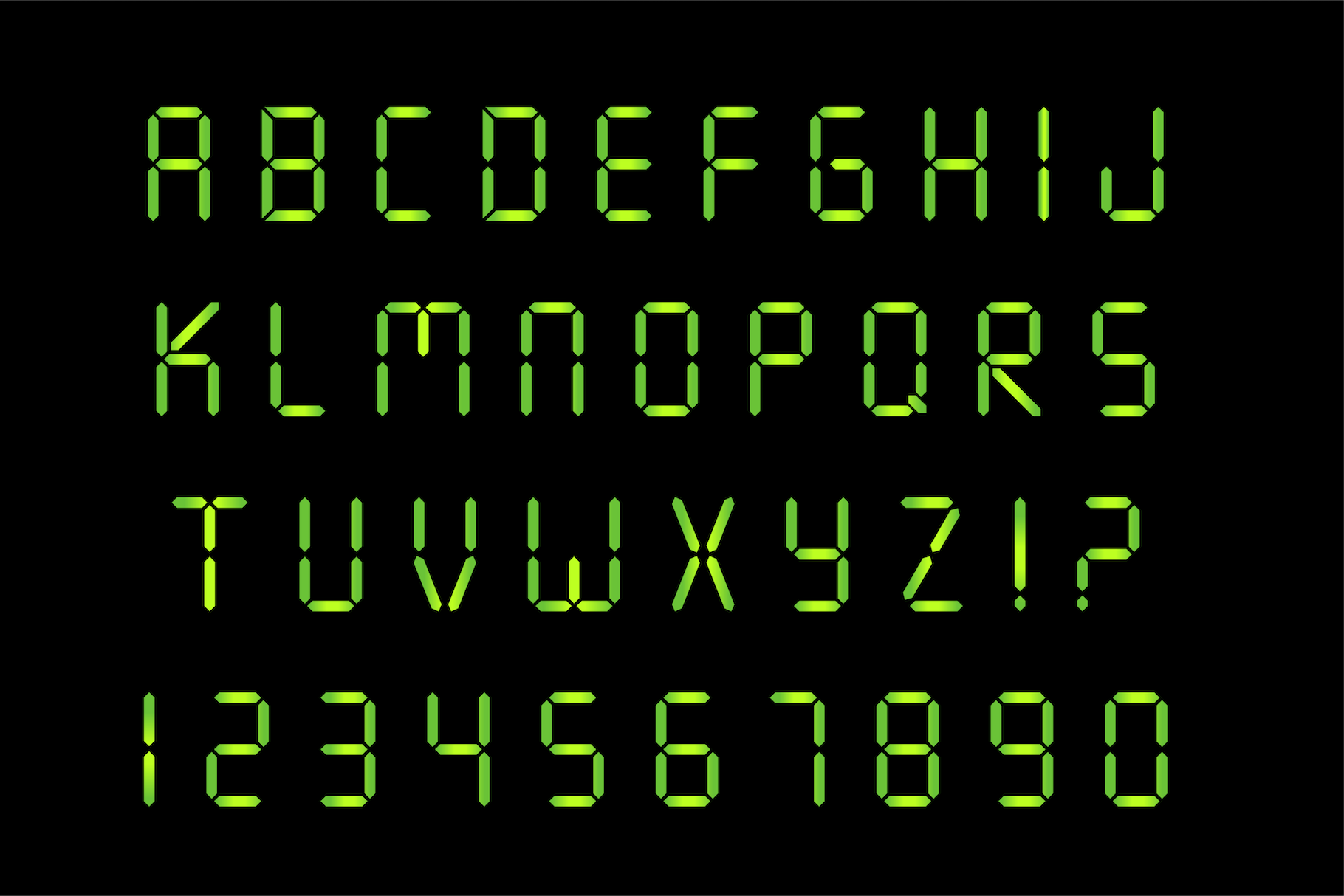
7 Segment Display Fonts
The common segment displays shown side by side: 7-segment,, and displays. The seven elements of the display can be lit in different combinations to represent the. Often the seven segments are arranged in an (slanted) arrangement, which aids readability.
Submit a font. 7 Segment.ttf. Note of the author. Multilingual 7-Segment Display Font. Strictly seven-segment (plus point) calculator display face, fixed-width and free. Other LED/LCD digital fonts may kern or include paths that are not available with seven segments in order to represent characters better. Segment7 does the best it can for upper- and lower-case Latin without compromising on the true LED display appearance.
[ ] In most applications, the seven segments are of nearly uniform shape and size (usually elongated, though and can also be used), though in the case of, the vertical segments are longer and more oddly shaped at the ends in an effort to further enhance readability. The numerals 6 and 9 may be represented by two different glyphs on seven-segment displays, with or without a 'tail'. The numeral 7 also has two versions, with or without segment F. The seven segments are arranged as a rectangle of two vertical segments on each side with one horizontal segment on the top, middle, and bottom. Additionally, the seventh segment bisects the rectangle horizontally.
There are also and (for full ); however, these have mostly been replaced by dot matrix displays. Twenty-two segment displays capable of displaying the full character set were briefly available in the early 1980s, but did not prove popular. The segments of a 7-segment display are referred to by the letters A to G, where the optional (an 'eighth segment', referred to as DP) is used for the display of non-integer numbers. Implementations [ ]. Typical pinout of a electronic seven-segment display.
Seven-segment displays may use a (LCD), a (LED) for each segment, an, or other light-generating or controlling techniques such as cold gas discharge (Panaplex),, (Numitron), and others. For price totems and other large signs, made up of electromagnetically flipped light-reflecting segments (or 'vanes') are still commonly used. An alternative to the 7-segment display in the 1950s through the 1970s was the cold-cathode, neon-lamp-like. Starting in 1970, sold a display device known as the Numitron that used incandescent filaments arranged into a seven-segment display.
In a simple LED package, typically all of the (negative terminals) or all of the (positive terminals) of the segment LEDs are connected and brought out to a common pin; this is referred to as a 'common cathode' or 'common anode' device. Hence a 7 segment plus decimal point package will only require nine pins, though commercial products typically contain more pins, and/or spaces where pins would go, in order to match standard sockets. Integrated displays also exist, with single or multiple digits.
Some of these integrated displays incorporate their own internal, though most do not: each individual LED is brought out to a connecting pin as described. A 4-digit, seven-segment display with only 12 pins Multiple-digit LED displays as used in pocket calculators and similar devices used to reduce the number of I/O pins required to control the display.
For example, all the anodes of the A segments of each digit position would be connected together and to a pin, while the cathodes of all segments for each digit would be connected. To operate any particular segment of any digit, the controlling integrated circuit would turn on the cathode driver for the selected digit, and the anode drivers for the desired segments; then after a short blanking interval the next digit would be selected and new segments lit, in a sequential fashion. In this manner an eight digit display with seven segments and a decimal point would require only 8 cathode drivers and 8 anode drivers, instead of sixty-four drivers and IC pins. Often in pocket calculators the digit drive lines would be used to scan the keyboard as well, providing further savings; however, pressing multiple keys at once would produce odd results on the multiplexed display.
Although to a naked eye all digits of an LED display appear lit, the implementation of a typical multiplexed display described above means that in reality only a single digit is lit at any given time. A single byte can encode the full state of a 7-segment-display. The most popular bit encodings are gfedcba and abcdefg, where each letter represents a particular segment in the display. In the gfedcba representation, a byte value of 0x06 would (in a common anode circuit) turn on segments 'c' and 'b', which would display a '1'. History [ ] Seven-segment representation of figures can be found in as early as 1903 (in ), when Carl Kinsley invented a method of telegraphically transmitting letters and numbers and having them printed on tape in a segmented format. Wood invented an 8-segment display, which displayed the number 4 using a diagonal bar ( ). Pehla nasha original instrumental free download songs.